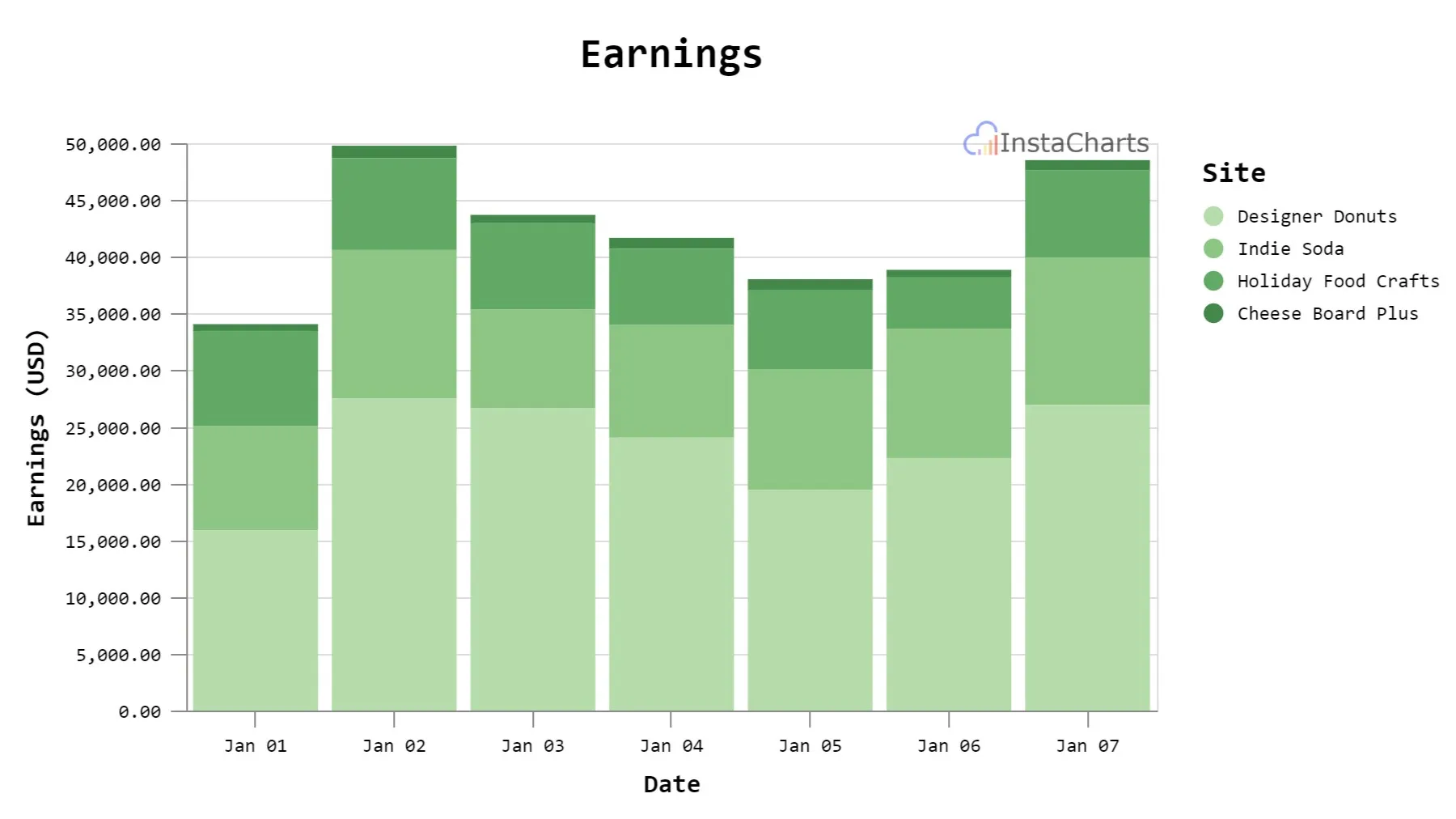When to use a bar chart
Use bar charts for frequency distributions, relative frequencies, comparisons between groups and changes over time.

What is a Bar Chart?
A bar chart is a graphical representation of data that uses bars to show comparisons between different categories.
Bar Chart Concepts
Bar charts are a versatile tool that can be used to display a variety of data, including:
Frequency distributions: A frequency distribution shows the number of times each value in a data set occurs. A bar chart can be used to display a frequency distribution by creating a bar for each value in the data set and labeling the bar with the number of times that value occurs.
Relative frequencies: A relative frequency shows the proportion of times each value in a data set occurs. A bar chart can be used to display relative frequencies by creating a bar for each value in the data set and labeling the bar with the proportion of times that value occurs.
Comparisons between groups: A bar chart can be used to compare the values of different groups. For example, a bar chart could be used to compare the sales of different products, the heights of different people, or the test scores of different students.
Changes over time: A bar chart can be used to show how values change over time. For example, a bar chart could be used to show the number of employees hired by a company each year, the number of cars sold each month, or the temperature each day.
Data Criteria
Bar charts are a good choice to use when the data you want to display meets the following criteria:
The data is categorical. This means that the data is divided into categories, such as age groups, colors, or countries.
The data is discrete. This means that the data can only take on a finite number of values, such as the number of employees in a company or the number of cars sold in a month.
The number of categories is not too large. If there are too many categories, the bar chart can become too cluttered and difficult to read.
Data Highlights
In addition to the above, bar charts are also a good choice to use when you want to:
- Highlight the largest or smallest values in a data set. Bar charts are very effective at showing which values are the highest or lowest, making them a good choice for comparing different categories of data.
- Show trends over time. Bar charts can also be used to show how values change over time. This can be useful for identifying trends and patterns in your data.
- Make it easy for your audience to compare different values. Bar charts are a very visually appealing way to present data, and they make it easy for your audience to compare different values.
When to Use Other Types of Charts
While bar charts are a versatile tool, there are other types of charts that may be better suited for displaying certain types of data. For example:
- Line charts: Line charts are good for showing trends over time.
- Pie charts: Pie charts are good for showing the distribution of data within a category.
- Scatter plots: Scatter plots are good for showing the relationship between two variables.
- Box plots: Box plots are good for showing the distribution of data within a group and comparing the distributions between different groups.
The best type of chart to use will depend on the specific data you want to display and the message you want to communicate to your audience. However, bar charts are a good choice to use in many situations.
Making a Bar Chart an Effective Visual
 This stacked bar chart uses colors to highlight different categories
This stacked bar chart uses colors to highlight different categories
Here are some additional tips for using bar charts effectively:
- Use a descriptive title and clear axis labels.
- Make sure the bars are of equal width.
- Use a consistent color scheme for the bars.
- Use a legend to identify different categories, if necessary.
- Avoid using too many categories, as this can make the chart difficult to read.
- Consider using a stacked bar chart or clustered bar chart to compare multiple data sets.
By following these tips, you can create bar charts that are clear, concise, and effective in communicating your data.
Create a bar chart in InstaCharts
InstaCharts is an online chart maker that helps you create professional-looking charts in seconds. The AI Chart Assist powered by InstaCharts takes many of the above elements under consideration when creating or recommending charts.
Create the perfect bar chart from your spreadsheet files, for free. Try the demo or sign up for a free account!